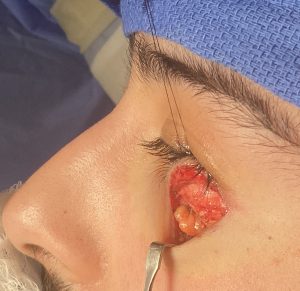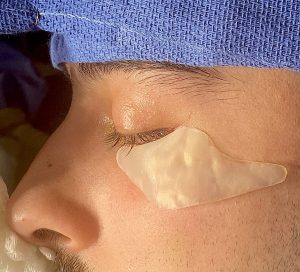The face is prone to a variety of aesthetic skeletal deficiencies of which the most common is that of the chin. Because it is a solitary projecting structure on the front edge of the lower face it is easy to recognize a deficiency as it also has an effect on the shape of the neck. But there are numerous other facial structural deficiencies now of which is literally seen all the time, frequently treated but often not recognized for the skeletal deficiency that it is.
Lack of adequate projection or development of the infraorbital rim is a common aesthetic facial deficiency that is frequently overlooked. This should not be confused with tear troughs which are smaller defects of the infraorbital area which often develop due to aging. Rather an infraorbital rim deficiency is more commonly seen as undereye hollows or when properly diagnosed called an negative orbital vector. They exist in the young patient become of their congenital origin and become magnified with aging with further soft tissue loss/descent. The definitive treatment for an infraorbital rim defierincy is a custom infraorbital or custom infraorbital-malar (IOM) implant.


Pseudofat herniation and infraorbital rim deficiencies are commonly seen together as lack of forward projection of the orbital rim exposes the normal lower eyelid fat. The custom infraorbital or infraorbital-malar implants provides normalization of the forward projection of the rim as well as an opportunity to reposition or remove the now visible fat.
Dr. Barry Eppley
World-Renowned Plastic Surgeon



